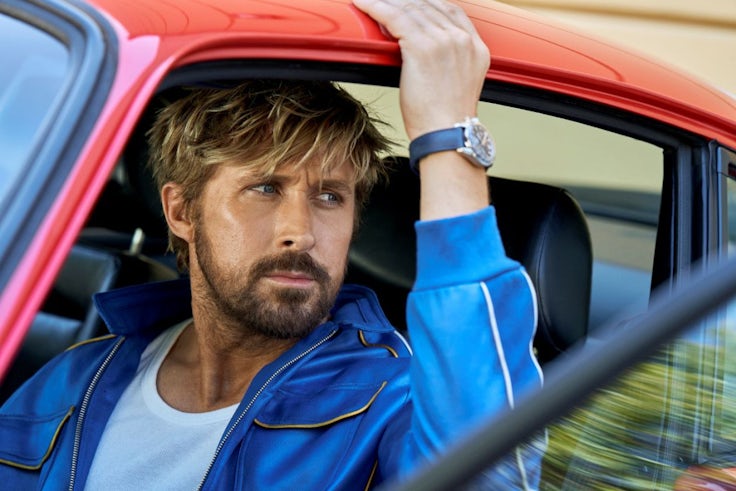Dom Pérignon perfectly demonstrates the appeal of scarcity
What better expression of a luxury brand than refusing to sell your product this year, because it would be impossible to meet your impeccable standards?

Summer 2023 was strange. Especially in France. There was an unusual spell of humidity. Then the temperature dipped. And finally, a record-breaking heatwave struck, particularly in central France and the region of Champagne.
Vincent Chaperon watched it all with a wary eye. Most winemakers did. But Chaperon carries an extra burden. He is the cellar master for Dom Pérignon. And Dom Pérignon is special.
Special in a James Bond, Marilyn Monroe, iconic way. But also special in a wine way – the kind that concerns Chaperon. Dom Pérignon is special because it is vintage-only.
Most of the hundreds of other producers in Champagne make both vintage and non-vintage wine. Vintage, made only from the grapes of a single year, is always a precarious bargain with God and the elements. It’s not unusual for
a champagne house to skip a year and lean on its non-vintage wine for its annual production and sales. Non-vintage champagne comes with lower price points, less lofty expectations and – crucially – can be made from a mixture of years, allowing a winemaker more latitude.
But not Dom Pérignon. Its special origins, peculiar 20th-century rebirth and proximity to sister brand Moët et Chandon contributed to a different path – that of only making vintage wine. The lack of a non-vintage is part of the mystique of Dom Pérignon. Partly because its vintage-only status signals prestige. Partly because it is something that other maisons simply do not do. And partly because the year that a bottle of Dom Pérignon is produced is a crucial part of its mythology.
When Sean Connery’s James Bond picks up a bottle to defend himself against Dr No, the villain counsels him that it would be a pity to break a bottle of Dom Pérignon 1955. Bond agrees and puts the bottle down, before pointing out that he prefers the ’53.
The numbers matter. That becomes abundantly clear when Dom Pérignon skips a vintage and produces nothing for a whole year. If luxury is built from exclusivity and scarcity, it cannot get more luxurious than ‘we have not made any and no one can buy it’.
Ritson: Karl Lagerfeld’s personal legacy isn’t matched by his brand
Total privation
And that was the story of last year’s vintage. As Chaperon worked with the fruit of that very difficult summer, he became increasingly unsure the required level of quality was there to make a magical wine. “I never share my doubts with the team until the final results are in,” he recently told the Robb Report luxury magazine. “But as many sports fans know, there comes a point where you know a season can’t be salvaged and it’s best to move on.”
It has happened before. All the way back to the 1920s there have been fallow years when nothing was produced. The mythical rule within the house of Dom Pérignon was that wine would only be made an average of six years out of 10. But the skill of modern winemaking (and the financial pressure of walking away from what must surely amount to more than a quarter of a billion pounds of revenue) has seen Dom Pérignon produced more regularly than anyone might have predicted.
The 2023 ‘vintage’ will join only three other missed years this century. And while that is testament to the winemaking skills of Chaperon and his predecessor, the legendary Richard Geoffroy, it’s also a branding shame that it’s so rare.
If luxury is built from exclusivity and scarcity, it cannot get more luxurious than ‘we have not made any and no one can buy it’.
With all the talk of salience and effectiveness and how brands (lower case b, plural s) grow, our marketing community now thinks of brands in a dangerously generic way. Most have forgotten one of the great precepts of brand building: that great brands don’t just rise to the top of the category, they often transgress it and work outside of it. Operating completely differently from and disruptively to those that surround them.
When every 1980s airline was monochrome and boring, Virgin injected fun into flying because it was part of its DNA.
Around the time McKinsey realised that there were more of its ex-employees than current ones in the business world (and that many would become clients), it spent an inordinate amount of time managing how they exited the business while remaining connected to the firm because relationships were at the heart of how it operated.
When Staples decided to make everything easy, it pulled all the best-selling SKUs to the front of every store in direct contradiction of the generic rules of retailing, which force customers to trek to the back of the building to get the items they need, hopefully buying other shit on the way.
Apple liberated its service people to roam its growing network of stores, because at the heart of its brand were the pillars of creativity, humanity and simplicity, and they wanted everything to express these values.
I used to call it being ‘disruptively consistent’. Or ‘consistently disruptive’.
At the heart of a strong brand is a transgressive desire to do things differently. But, paradoxically, this transgression stems from a desire to be consistent to some special attribute, association or origin.
A missed opportunity?
For Dom Pérignon, being vintage-only is one of the most important elements of its DNA. That means that while skipping a vintage might represent both an oenological and financial setback, it also offers an unparalleled opportunity to build the brand.
Because while almost everyone knows the name Dom Pérignon, most people don’t know how special it is. Or about James Bond. And skipped vintages. And doing it differently from all the others. And here was a chance for the marketing team to seize an important moment.
From a rational, generic standpoint, the fact that there will be no wine to sell from the 2023 vintage is an obvious case for saying nothing and moving on. After all, why promote something you will not make? And cannot sell? To people who won’t be able to buy it?
But if you understand brands. If you appreciate the long of it as much as the short. And if you grasp the sublime opportunity to be disruptively consistent, this should have been the biggest PR investment in years for Dom Pérignon.
A big press conference. A series of quotes from a disappointed Bernard Arnault – chairman and CEO of LVMH, the ultimate owner of Dom Pérignon – expressing the financial loss. Then exclusive interviews with Chaperon as he walks the ancient vineyards at Hautvillers explaining the pressure he was under and the fact that he would not yield to it because the wine would not have been good enough. Perhaps for other houses of lower quality, but not for Dom Pérignon.
LVMH ‘not giving up’ on brand investment despite weak sales
It’s a message that would have nestled beautifully on the corner of the FT’s front page and inside the Wall Street Journal’s weekend magazine, and translated neatly into Mandarin for China Daily. The story of a brand that could not make anything good enough, so it decided to make nothing.
Over and above simple salience, and the impact on the demand and prices for current and future vintages, this was a chance for Dom Pérignon to be Dom Pérignon. And in being it, also to be unlike any other champagne house. Special. Different. Non-generic. A brand.
Mark Ritson runs the Mini MBA in Marketing. The next course starts in April 2025 and places are already filling up. Both for individual marketers and organisations.







